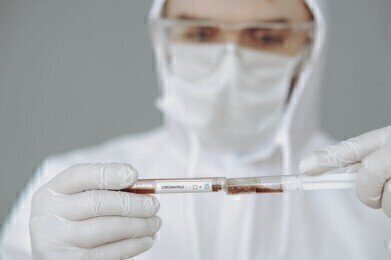News & Views
What is CSF Sample Processing?
Sep 28 2021
Cerebrospinal fluid (CSF) samples are one of the most valuable resources doctors can acquire when diagnosing conditions that affect the brain and spinal cord. The clear fluid surrounds these areas and acts as a cushion for the central nervous system, protecting against injury while simultaneously delivering nutrients to the brain and removing waste from the complex organ.
When things aren’t functioning as they should, CSF samples offer insight into the levels and concentrations of different cells, substances and contaminants in the fluid. Results are used to diagnose a range of central nervous system conditions, including meningitis, encephalitis, tuberculosis and fungal infections. CSF analysis is also used to detect haemorrhages, immune response disorders and tumours in the brain and spine. With so much value to unlock, it’s critical to adhere to best-practice techniques when collecting and processing CSF samples.
Processing CSF samples to diagnose meningitis
In the United States, the Centres for Disease Control and Prevention (CDC) has strict guidelines when it comes to collecting and processing CSF samples used to diagnose meningitis.
“The proper collection and transport of clinical specimens is critical for the isolation, identification, and characterisation of agents that cause bacterial meningitis,” reads the official Laboratory Methods for the Diagnosis of Meningitis document published on the CDC website.
N. meningitidis, along with other bacterium such as S. pneumoniae, and H. influenzae, are fragile and easily disrupted. The CDC states that to ensure reliable results, clinical specimens must be examined as soon as possible following collection. Ideally, CSF samples should be processed in a dedicated microbiology facility within one hour of collection. If this timeframe isn’t possible, a Trans-Isolate (T-I) medium should be used to inoculate the specimen and retain its integrity.
Best-practice health and safety when processing CSF samples
As well as safeguarding the integrity of CSF samples, the CDC underscores the importance of adhering to biosafety guidelines. CSF is often collected to diagnose infectious diseases such as meningitis and tuberculosis, meaning all staff that come into contact with samples must commit to best-practice health and safety measures. To minimise the risk of transmission, the CDC recommends the following when collecting and processing CSF samples:
- Wearing waterproof nitrile or latex gloves
- Using puncture-resistant containers to dispose of syringes
- Cleaning all sealed CSF sample bottles with disinfectant before transporting
- Encourage bleeding in the case of a needle-stick injury obtained during collection
Accessing CSF samples through biobanks
While most CSF samples are used to diagnose central nervous system conditions in individual patients, they can also be stored in biobanks and used as valuable resources for independent pharmaceutical and biotechnology companies. Welsh-based company Biosample Hub is on a mission to make accessing CSF samples easy and affordable, with founder Robert Hewitt offering more information on the project in ‘The challenges of biosample access and what needs to change.’
Digital Edition
Lab Asia 31.2 April 2024
April 2024
In This Edition Chromatography Articles - Approaches to troubleshooting an SPE method for the analysis of oligonucleotides (pt i) - High-precision liquid flow processes demand full fluidic c...
View all digital editions
Events
Apr 22 2024 Marrakech, Morroco
Making Pharmaceuticals Exhibition & Conference
Apr 23 2024 Coventry, UK
Apr 23 2024 Kintex, South Korea
Apr 23 2024 Seoul, South Korea
Apr 24 2024 Jakarta, Indonesia













.jpg)




